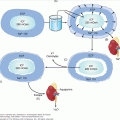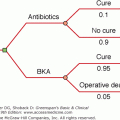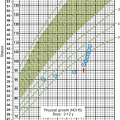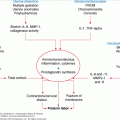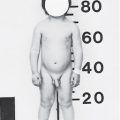Abbreviations
- ACTH Adrenocorticotropic hormone
- AIDS Acquired immunodeficiency syndrome
- BMD Bone mineral density
- CMV Cytomegalovirus
- CRH Corticotropin-releasing hormone
- CVD Cardiovascular disease
- DHEA Dehydroepiandrosterone
- DXA Dual energy x-ray absorptiometry
- FSH Follicle-stimulating hormone
- GH Growth hormone
- GHRH Growth hormone–releasing hormone
- GnRH Gonadotropin-releasing hormone
- HAART Highly active antiretroviral therapy
- HDL High-density lipoprotein
- HIV Human immunodeficiency virus
- IGF Insulin-like growth factor
- IL Interleukin
- IMT Intima media thickness
- LDL Low-density lipoprotein
- LH Luteinizing hormone
- M/I Glucose disposal adjusted for insulin level
- MRI Magnetic resonance imaging
- NRTI Nucleoside reverse transcriptase inhibitor
- NNRTI Nonnucleoside reverse transcriptase inhibitor
- PI Protease inhibitor
- PPARγ Peroxisome proliferator-activated receptor γ
- PTH Parathyroid hormone
- RANK Receptor activator of nuclear factor kappa
- REE Resting energy expenditure
- RXR Retinoid X receptor
- SREBP Sterol regulatory enhancer-binding protein 1
- T3 Triiodothyronine
- T4 Thyroxine
- TBG Thyroxine-binding globulin
- TNF Tumor necrosis factor
- TRH Thyrotropin-releasing hormone
- VLDL Very low density lipoprotein
AIDS Endocrinopathies: Introduction
Symptoms consistent with endocrine disorders and alterations in endocrine laboratory values are not unusual in individuals infected with the human immunodeficiency virus (HIV). Some of these changes are common to any significant systemic illness; others appear to be more specific to HIV infection or its therapies. Alterations can be found in HIV infection even before clinically significant immunocompromise occurs. As the infected individual becomes immunocompromised, opportunistic infections and neoplasms—as well as the agents used in the treatment of these disorders—can give rise to further changes in endocrine function. Herein we discuss alterations in endocrine function that can accompany HIV infection and acquired immunodeficiency syndrome (AIDS), focusing on evaluation and interpretation of clinical and laboratory findings.
Thyroid Disorders
In the era of highly active antiretroviral therapy (HAART), clinical thyroid dysfunction is relatively uncommon in stable HIV-infected patients. In several large studies, the prevalence of hypothyroidism was 1% to 2.5% and hyperthyroidism was 0.5% to 1%. The prevalence of subclinical disease was higher, with subclinical hypothyroidism between 3.5% and 20% and subclinical hyperthyroidism <1%, although definitions varied between studies. These data do not support screening for thyroid disease above the standard guidelines. With advanced HIV disease, alterations in thyroid function tests do occur but generally do not result in clinical dysfunction. In patients with AIDS, the effects of opportunistic infections and neoplastic involvement of the thyroid, as well as the effects of some medications used to treat HIV-infected patients, should be considered.
HIV-infected patients can show alterations in thyroid function tests that are largely asymptomatic. Some of the changes are similar to those seen in the classic euthyroid-sick syndrome, whereas others are unique to the HIV disease state. Advanced HIV is associated with a decrease in thyroid hormone levels, triiodothyronine (T3) and thyroxine (T4), similar to that seen in the euthyroid-sick syndrome. When HIV-infected patients were stratified by weight loss and the presence of secondary infection, a decline in T3 levels corresponded to the severity of disease, consistent with the euthyroid-sick syndrome. Deterioration in nutritional status can also contribute to the decrease in T3 and T4, because there is a strong correlation between albumin levels and both free T4 and total T3 levels. In the euthyroid-sick syndrome, decreased levels of serum thyroid hormones are due to impaired peripheral T4 to T3 conversion by 5′ deiodinase. In HIV-infected patients, decreases in serum free T4 and free T3 may be due to decreased extrathyroidal conversion of T4 to T3, an increase in serum binding proteins, and/or decreased secretion of TSH.
Despite the similarities in serum thyroid hormone levels between HIV and the euthyroid sick syndrome, significantly ill HIV-infected patients often do not demonstrate the elevated reverse T3 levels characteristic of the euthyroid sick syndrome. The significance of this difference is unknown.
Another characteristic finding in HIV-infected patients is an elevation in thyroxine-binding globulin (TBG), which rises progressively with advancing immunosuppression. TBG levels correlate inversely with the CD4 lymphocyte count, and in the past were used as a surrogate marker for disease progression. The increase in TBG does not appear to be due to generalized changes in protein synthesis, increases in sialylation and altered clearance of TBG, or changes in estrogen levels. The cause and clinical significance of the increased TBG found in HIV-infected patients are unknown. However, increases in TBG affect total T4 and T3 measurements, and this should be considered when interpreting these tests in HIV-infected patients.
Subtle alterations in TSH dynamics have been reported in stable HIV-infected patients. Although their TSH and free T4 levels remain within the normal range, these individuals demonstrate significantly higher TSH values and lower free T4 values than uninfected controls. In circadian studies, HIV-infected individuals have higher TSH pulse amplitudes with unchanged pulse frequency as well as a higher peak TSH in response to thyrotropin-releasing hormone (TRH) stimulation. These studies are consistent with a subtle state of compensated hypothyroidism in HIV infection; the mechanisms underlying these alterations have not been elucidated.
The typical pattern of alterations in thyroid function tests in HIV-infected patients is outlined in Table 25–1.
Opportunistic pathogens and neoplasms can invade the thyroid in HIV-infected individuals but generally do not cause clinical thyroid dysfunction. Although the prevalence of thyroid involvement is unknown, autopsy of 100 AIDS patients prior to the era of HAART showed the presence of Mycobacterium tuberculosis in 23% of patients’ thyroids, followed by cytomegalovirus (CMV) (17%), Cryptococcus neoformans (5%), Mycobacterium avium (5%), Pneumocystis carinii (4%), and other bacteria or fungi (7%).
A few of these pathogens are noteworthy because they have been associated on occasion with both hyper- and hypothyroidism. Pneumocystis carinii has been associated with inflammatory thyroiditis accompanied by hypothyroidism in seven cases, hyperthyroidism in three cases, and normal thyroid function in one case. Antithyroid antibodies were negative in all six cases in which they were measured. Radionuclide scanning in seven cases revealed poor visualization of the entire thyroid gland in patients with bilateral disease and nonvisualization of the affected lobe in patients with unilateral disease. Two patients with hyperthyroidism had normalization of thyroid function after treatment of the P. carinii infection. Kaposi sarcoma has also been reported to infiltrate the thyroid gland and resulted in significant destruction and hypothyroidism in at least one case. In two cases, lymphoma was associated with thyroid infiltration, causing thyroidal enlargement.
Several medications used to treat HIV-infected patients can alter the clearance of thyroid hormone by inducing hepatic microsomal enzymes. These medications include rifampin, phenytoin, ketoconazole, and ritonavir. Patients with normal thyroid function should not be clinically affected, although decreases in T4 may be observed. However, patients receiving l-thyroxine may require increased doses, and patients with decreased pituitary or thyroid reserve may develop clinically apparent hypothyroidism. Isolated, but well-documented reports of need for increased thyroxine doses after starting ritonavir and decreased doses after indinavir have been published; these medications affect glucuronidation, but given the common use of high doses of these drugs in the past, it is surprising how rarely problems present. Interferon-alpha, a therapy used for Kaposi sarcoma and hepatitis C (an increasing coinfection with HIV), has been associated with autoimmune diseases of the thyroid, including hyperthyroidism and hypothyroidism. Medications used in HIV-infected patients that can affect the endocrine system are listed in Table 25–2.
| Thyroid |
| Rifampin |
| Phenytoin |
| Ketoconazole |
| Possibly ritonavir |
| Possibly indinavir |
| Interferon-alpha |
| Adrenals, Electrolytes |
| Rifampin |
| Ketoconazole |
| Ritonavir |
| Megestrol acetate |
| Trimethoprim |
| Pentamidine |
| Sulfonamides |
| Amphotericin B |
| Foscarnet |
| Gonads |
| Ketoconazole |
| Megestrol acetate |
| Bone, Calcium |
| Tenofovir |
| Adefovir |
| Cidofovir |
| Foscarnet |
| Pentamidine |
| Trimethoprim-sulfamethoxazole |
| Ketoconazole |
| Rifampin, rifabutin |
| Pancreas, Glucose |
| Indinavir |
| Ritonavir |
| Possibly lopinavir/ritonavir |
| Pentamidine |
| Trimethoprim- sulfamethoxazole |
| Dedeoxyinosine (ddI) |
| Dedeoxycytosine (ddC) |
| Megestrol acetate |
| Growth hormone |
| Lipids |
| Ritonavir |
| Efavirenz |
| Nevirapine |
| Stavudine |
| Tenofovir |
With the advent of HAART, there have been case report series of newly diagnosed autoimmune diseases such as Graves disease, Hashimoto thyroiditis, and alopecia areata. Immune reconstitution with HAART raises the possibility of subsequent induction of autoimmune diseases. The cases appeared late after immune reconstitution (8-32 months). Possible theories include thymic regeneration or peripheral T lymphocyte expansion causing irregularities in tolerance, leading to autoimmune dysfunction. Other studies, however, could not link autoimmune thyroid disease to HAART, and the low prevalence in the large published studies suggests that increased screening above standard guidelines may not be warranted.
Adrenal Disorders
Opportunistic infections commonly involve the adrenal glands but rarely occupy enough of the gland to cause adrenal insufficiency. Impaired adrenal reserve without overt symptoms of adrenal insufficiency has been described in patients with HIV. Those patients with a subnormal response to dynamic testing represent a group for which there is controversy over when to give baseline replacement glucocorticoids (or mineralocorticoids) or increased doses in stressful situations, especially when baseline levels are normal or elevated. With restoration to health by treatment of opportunistic infections or HIV itself, many of these patients no longer have adrenal insufficiency.
Opportunistic organisms are found commonly in the adrenal glands of patients dying of AIDS although they rarely cause clinical adrenal insufficiency. CMV has been associated with significant necrosis of the adrenal gland, although the amount of tissue affected rarely reaches 90%, thought necessary to cause clinical adrenal insufficiency. In one preliminary study, however, the presence of CMV retinitis was associated with an increased rate of adrenal insufficiency compared with AIDS patients without that disorder. Less common opportunistic infections involving the adrenals include Mycobacterium tuberculosis, Mycobacterium avium-intracellulare, Cryptococcus neoformans, Histoplasma capsulatum, P. carinii, and Toxoplasma gondii. In addition, Kaposi sarcoma and lymphoma can involve the adrenals, but rarely to the extent of inducing adrenal insufficiency.
Classic clinical symptoms of adrenal insufficiency are seldom seen, but some clinicians view the weakness and weight loss observed in patients with AIDS as an indicator of adrenal insufficiency. HIV-infected patients usually have normal or, even more commonly, elevated basal cortisol levels. The elevated levels occur most commonly in advanced disease, which may be a stress response, but is confounded by an increase in cortisol-binding globulin. Adrenocorticotropic hormone (ACTH) levels have mostly been found to be normal or elevated in patients with elevated basal cortisol levels, although some reports of low levels exist. Some of these alterations may be mediated by multiple cytokines; both interleukin (IL)-1 and tumor necrosis factor (TNF) can directly stimulate cortisol secretion, while IL-1 and IL-6 can stimulate ACTH and corticotropin-releasing hormone (CRH) release. On the other hand, IL-2 and IL-4 increase sensitivity to cortisol. An increase in cortisol levels may also be a direct response to HIV infection itself. The HIV envelope protein gp120 increases cortisol levels. HIV-1 virus encodes several proteins such as Vpr and Tat that may increase cortisol sensitivity. An increased cortisol to dehydroepiandrosterone (DHEA) ratio correlates with body weight loss and HIV-associated malnutrition.
Subclinical abnormalities in hypothalamic pituitary axis dynamics are often present. Nearly all HIV-infected patients have a normal cortisol response to the standard high-dose (250 μg) ACTH stimulation testing. Other studies have shown that stimulation with low-dose cosyntropin (1 μg) resulted in a diagnosis of glucocorticoid insufficiency in roughly 10% to 20% of outpatients with HIV and up to 50% of critically ill HIV-infected patients. During CRH stimulation testing, a reduced ACTH or cortisol response was seen in up to 50% of stable HIV-infected patients with CD4 counts less than 500/μL. The abnormalities of decreased reserve either at the pituitary or at the adrenal level in HIV infection are similar to those that occur in other infections or serious illnesses.
Although clinically significant abnormalities in glucocorticoid secretion appear to be uncommon, subtle alterations in adrenal biosynthesis may be more common. HIV-infected patients have reduced products of the 17-deoxysteroid pathway (corticosterone, deoxycorticosterone, and 18-hydroxydeoxycorticosterone) with normal or elevated products of the 17-hydroxy pathway (cortisol) before and after ACTH stimulation. It is not known whether this alteration represents an early indication of evolving adrenal insufficiency or is an adaptive response that shifts adrenal synthetic activity to steroids that are crucially needed under conditions such as HIV infection that impose physical stress. Twenty-four-hour urine-free cortisol levels do not predict the subtle adrenal alterations in HIV-infected patients, but may indicate adequate adrenal function.
Glucocorticoid resistance has been described in HIV-infected patients. This syndrome is characterized by symptoms of weakness, fatigue, weight loss, and hyperpigmentation, with elevated cortisol levels and mildly increased ACTH levels. Decreased lymphocyte glucocorticoid receptor affinity for glucocorticoids has been described in these patients. A similar state is seen in glucocorticoid-resistant asthma patients. Increased expression of the beta form of the glucocorticoid receptor, which inhibits the alpha form, has also been reported. Partial glucocorticoid resistance could explain the finding of increased basal cortisol in some HIV-infected patients, but the prevalence and clinical significance of this syndrome are uncertain.
HIV-infected patients have decreased basal adrenal androgen levels and impaired adrenal androgen responses to ACTH stimulation. Decreased adrenal androgens have been seen at all stages of HIV infection, as well as in HIV-negative intensive care unit patients. Thus, this change may not be specific to HIV infection but may instead be a feature of the physiologic response to illness, which is often accompanied by increased cortisol. In two studies, a fall in DHEA levels predicted progression to AIDS independent of CD4 cell counts. DHEA has been shown in vitro to inhibit HIV replication, which raised the possibility that the decreased DHEA levels observed in HIV-infected patients might influence the effects of the HIV infection. However, the efficacy of DHEA replacement in HIV-infected patients has never been demonstrated. Adrenal androgens may be decreased in women with HIV infection; low-dose testosterone replacement has been shown to induce small improvements in lean mass, depression, and sexual function.
Although electrolyte disturbances are not uncommon in HIV-infected patients, provocative testing of the mineralocorticoid axis has revealed few abnormalities. In contrast to glucocorticoid levels, basal and ACTH-stimulated aldosterone levels have been found to be normal in almost all HIV-infected patients studied, including both outpatients and inpatients. Nevertheless case reports of hypo- and hyperaldosteronism appear in the literature, although there is no evidence that these disorders are increased in HIV infection. Longitudinal studies suggest that the aldosterone response to ACTH stimulation may diminish with progression to later stages of HIV infection in up to half of HIV-infected patients; however, basal levels of aldosterone and plasma renin activity remain normal, and clinically significant hypoaldosteronism does not develop.
The usual pattern of alterations in adrenal hormones is shown in Table 25–3.
Several medications used in the treatment of HIV-related disorders can alter glucocorticoid metabolism. Ketoconazole inhibits the cytochrome P450 enzymes P450scc and P450c11, decreasing cortisol synthesis and leading to adrenal insufficiency in patients with decreased adrenal reserve. Rifampin increases hepatic metabolism of steroids and may lead to adrenal insufficiency in patients with marginal adrenal reserve.
Megestrol acetate has intrinsic cortisol-like activity, decreasing serum cortisol and ACTH levels through suppression of the hypothalamic-pituitary-adrenal axis centrally. Patients taking megestrol have decreased cortisol and ACTH levels in response to metyrapone testing. They may become frankly Cushingoid and may show signs of adrenal insufficiency upon its rapid discontinuation. Some HIV protease inhibitors (PIs) block the metabolism of the inhaled steroid fluticasone by CYP3A4 and can lead to Cushing syndrome even in the absence of systemic steroid use. PIs do not seem to have an effect on plasma cortisol levels. However, there is debate in the literature about whether these agents increase or decrease urinary free cortisol or 17-hydroxycorticosteroid excretion.
Medications used to treat HIV-related illnesses can lead to electrolyte disturbances mimicking disorders of mineralocorticoids. Trimethoprim impairs sodium channels in the distal nephron, decreasing potassium secretion, which can result in hyperkalemia. Pentamidine has also been associated with hyperkalemia in rare instances, perhaps through nephrotoxicity. Sulfonamides are associated with interstitial nephritis and hyporeninemic hypoaldosteronism. Finally, amphotericin B causes renal potassium and magnesium wasting.
Medications used in HIV-infected patients that can affect the endocrine system are listed in Table 25–2.
In summary, there is little evidence for clinically significant impairment of adrenal steroid excretion in HIV infection. The subtle alterations in the glucocorticoid and androgen synthesis pathways may be an adaptive response to physiologic stress and may occur with other illnesses. Patients with HIV infection who exhibit symptoms consistent with adrenal hormone deficiency should undergo provocative testing in the same manner as uninfected individuals. Patients with both low baseline and abnormal glucocorticoid or mineralocorticoid responses to provocative testing should be treated with physiologic replacement doses of oral glucocorticoids or mineralocorticoids. Patients on replacement should be covered with high doses of glucocorticoids (usually 150-300 mg of hydrocortisone per day or equivalent) during episodes of severe illness. Electrolyte abnormalities should prompt evaluation for medication effects and the presence of renal disease.
The HIV-infected patient with a minimally elevated or frankly high basal cortisol who does not increase significantly after ACTH stimulation poses a difficult problem. Most of these individuals have normal responses to prolonged ACTH stimulation, and seronegative patients with significant illness can have similar patterns that revert to normal after treatment of the illness. Chronic glucocorticoid therapy may have significant adverse consequences in these individuals, who are already immunocompromised. Most HIV-infected patients with this pattern and even many with baseline low levels during acute illness do not appear to require long-term glucocorticoid replacement. Consideration could be given to administering short courses of steroid therapy during significant illness for individuals with indeterminate stimulation results based on clinical judgment and individual patient circumstances.
Bone and Mineral Disorders
There is evidence of low bone mass and, less commonly, osteoporosis in HIV-infected patients either without therapy or while receiving HAART, but the etiology remains controversial. The incidence of fractures may be increased, but there are too few studies of fracture rate to know with certainty. Therapy with bisphosphonates is effective at increasing bone mineral density (BMD) in HIV-infected patients, but there are no convincing data on fracture prevention.
Prior to the introduction of HIV PIs, low BMD was not commonly observed in HIV-infected patients. The few clinical studies on the effects of HIV on bone mineralization suggested that HIV had relatively little effect on BMD. One study followed 45 HIV-infected men for 15 months and found no change in lumbar spine and hip BMD. However, histomorphometric analysis of bone biopsies from AIDS patients showed some evidence of decreased bone formation and bone turnover; these changes were more marked in more severely affected patients. HIV itself may have an indirect effect on BMD by activating the receptor activator of nuclear factor kappa B ligand (RANK-L), which activates osteoclasts and their precursors. Activated T cells express the receptor for RANK-L—that is, RANK. The cytokines TNF-alpha and IL-1, whose levels may be increased in HIV infection, also have been shown to activate RANK-L.
After the introduction of PI-based HAART, reports of osteoporosis began to emerge. Some cross-sectional studies suggested that patients on PIs had a higher prevalence of osteoporosis and osteopenia compared to HIV-infected patients not taking PIs. However, other studies did not find a specific association of PIs with decreased BMD by dual energy x-ray absorptiometry (DXA). To date, most cross-sectional studies have shown that both HIV-infected men and women, on any form of HAART, have lower BMD or a higher prevalence of osteopenia, compared to gender- and ethnicity-matched control subjects. In one meta-analysis of 20 papers, the prevalence of reduced BMD was 67%, and the prevalence of osteoporosis was 15% in HIV-infected patients, which represents a 6.4-fold greater prevalence of reduced BMD and 3.7-fold greater prevalence of osteoporotic T scores compared to controls. Furthermore, those treated with ARV had a 2.5-fold higher prevalence of reduced BMD than those who were ARV-naive. Lactic acidemia associated with nucleoside reverse transcriptase inhibitor (NRTI) use has been hypothesized to contribute to bone demineralization. However, the role of specific ARV drugs as a cause of bone demineralization remains debated, as many recent studies fail to show an association between osteopenia and individual drugs. Thus, ARV use per se is associated with lower BMD. Divergent effects of PIs on bone cells in vitro have been reported.
Another meta-analysis found that the effect of HIV infection was mostly accounted for by decreased weight. Other studies have found associations of low albumin and past steroid use with low BMD. A randomized longitudinal study showed that continuous ARV therapy, used to suppress HIV, was associated with greater loss of bone mass and perhaps more fractures than intermittent ARV therapy designed to reduce drug exposure. However, the absolute rate of BMD loss by DXA was actually quite small in those on continuous ARV therapy (−0.5%/year at the hip and −0.7%/year at the spine). In a large database analysis, the fracture rate was increased 1.7-fold in HIV-infected Caucasian men and 1.4-fold in HIV-infected Caucasian and African American women compared to their respective controls.
Treatment for HIV-associated osteoporosis with bisphosphonates has been examined. Multiple studies have shown that the bisphosphonates alendronate and zoledronic acid given either with or without calcium and vitamin D supplementation to HIV-infected patients with osteopenia or osteoporosis improved BMD in the lumbar spine and hip after 1 to 2 years of therapy. The effects of treatments for other HIV-related problems on BMD or bone markers have been assessed. Eugonadal men with AIDS wasting syndrome treated with intramuscular testosterone for 3 months had small increases in lumbar spine BMD; however, high doses of testosterone were associated with decreases in HDL cholesterol levels. Recombinant growth hormone (GH) treatment for 24 weeks in HIV wasting syndrome did not affect BMD. Short-term growth hormone–releasing hormone (GHRH), used to treat HIV-infected men with abdominal fat accumulation, was associated with an increase in bone turnover markers; however the effect of GHRH use on BMD remains to be determined.
Osteonecrosis has been reported both in adults and in children infected with HIV, and there is concern about the rising prevalence of osteonecrosis in this population. The most likely reason for the apparent rise in prevalence of the syndrome is increased awareness among clinicians. A study of 339 HIV-infected patients reported a prevalence of asymptomatic osteonecrosis, diagnosed by magnetic resonance imaging (MRI) as 4.4%. The annual incidence has been reported to be between 0.08% and 1.3%, which is much higher than the annual incidence in the general population (0.01%-0.135%).
The clinical presentation and anatomic distribution are similar to HIV-negative patients. The most common location for osteonecrosis is the hip, but other locations include the humeral heads, femoral condyles, and scaphoid and lunate bones. In HIV infection, the majority of large joint involvement is bilateral. Cases of osteonecrosis of the jaw/oral cavity have also been reported.
Plain film x-rays often underdiagnose osteonecrosis as changes on x-ray are confined to advanced stage (III and IV) disease; MRI is more effective at finding early-stage disease. Some data support treatment with bisphosphonates in early disease involving major joints to reduce pain, but there are inadequate randomized, controlled trials to assess whether such therapy prevents progression. Core decompression with and without bone graft has had some success. Total joint replacement may be the only recourse in late disease (eg, following collapse of the femoral head).
An association between osteonecrosis and PIs was initially reported; however, subsequent studies have failed to show a causal relationship with PI use. Other possible etiologies include those that may be more frequent in patients with HIV infection (corticosteroid use, HIV-associated vasculitis, chemotherapy, and irradiation) and other traditional risk factors (ethanol use, sickle cell disease, hemoglobinopathies, and clotting disorders).
Calcium, phosphate, and calciotropic hormone disturbances are associated with several HIV-related illnesses and medications. Hypercalcemia with an elevated 1,25-dihyroxyvitamin D level has been associated with both AIDS-related lymphoma and infections with M. tuberculosis, M. avium-intracellulare, P. jiroveci, C. neoformans, and Coccidioides immitis. This hypercalcemia is likely due to increased extrarenal 1-alpha hydroxylation of 25-hydroxyvitamin D to 1,25-dihydroxyvitamin D by inflammatory macrophages or tumor cells. In CMV infection, activated T cells or proinflammatory cytokines may secrete factors that activate osteoclasts, causing hypercalcemia. The syndrome has also been reported after starting antiretroviral therapy, with improvements in lymphocyte function, as part of the immune reconstitution syndrome. Recombinant human GH treatment has been associated with slight increases in serum calcium levels in some studies.
Stay updated, free articles. Join our Telegram channel

Full access? Get Clinical Tree


